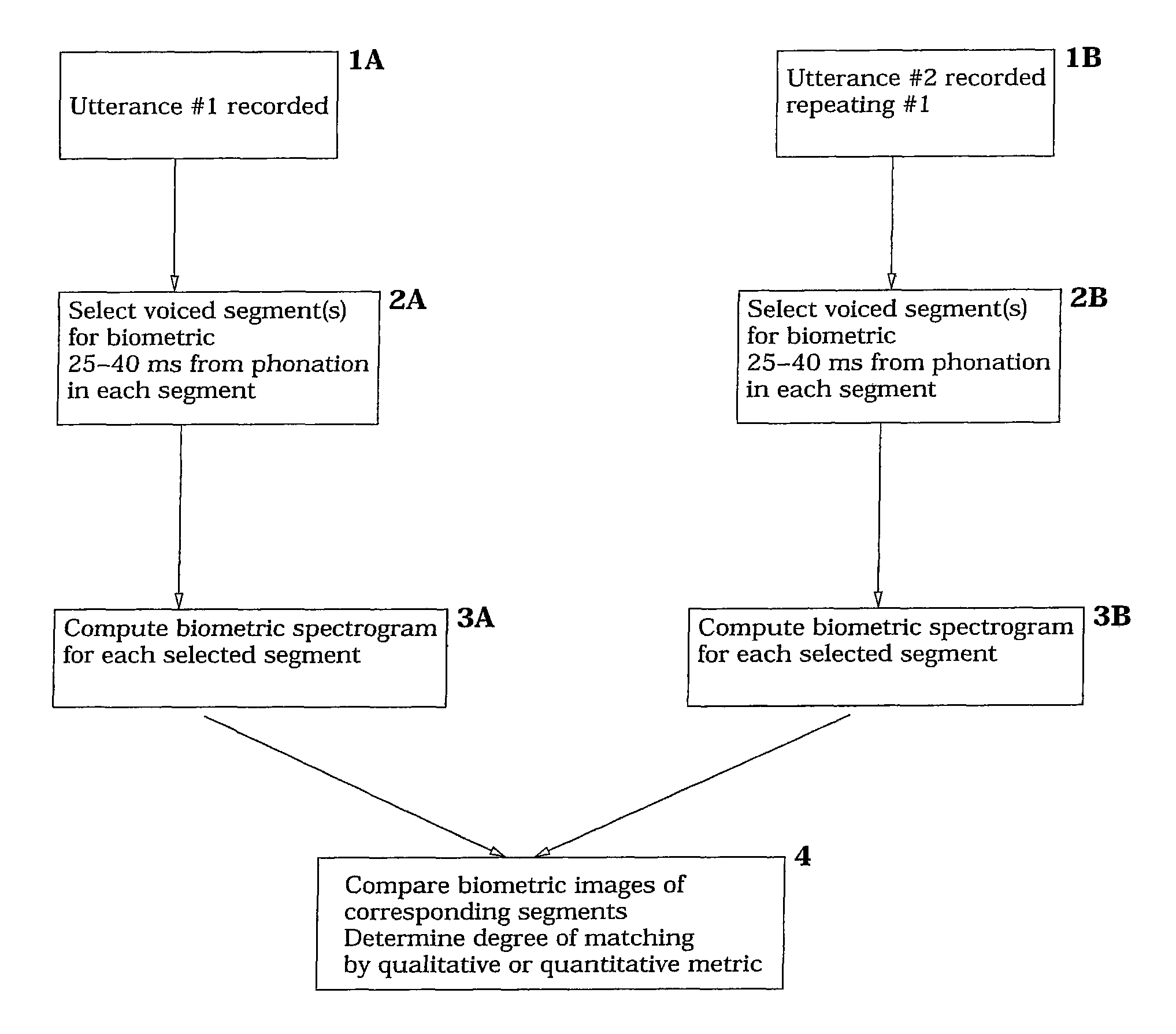Methods of identification using voice sound analysis
a voice and sound analysis technology, applied in the field of methods of identifying speakers, can solve the problems of insufficient scientific theory and data supporting the assumption of interspeaker variability exceeding intraspeaker variability, and the use of conventional spectrograms for voice identification has not received general approval for use in court proceedings, so as to eliminate noise and other distractions
- Summary
- Abstract
- Description
- Claims
- Application Information
AI Technical Summary
Benefits of technology
Problems solved by technology
Method used
Image
Examples
Embodiment Construction
[0024]The invention, in its various aspects, will be explained in greater detail below with regard to preferred embodiments. While the invention will be described in conjunction with the preferred embodiments, the preferred embodiments themselves do not limit the scope of the invention. Rather the invention, as defined by the claims, may cover alternatives, modifications, and / or equivalents of the preferred embodiments. Similarly, the accompanying drawings do not limit the scope of the preferred embodiments and / or the invention, but rather, are illustrative of one or more examples of the preferred embodiments and / or invention.
[0025]In some embodiments of the methods of the present invention, two phases are contemplated—the first phase involves obtaining and processing a vocal utterance from a speaker and the second phase involves obtaining and processing a second vocal utterance to be matched with the first.
[0026]In the first phase, a vocal utterance is obtained from a speaker and t...
PUM
 Login to View More
Login to View More Abstract
Description
Claims
Application Information
 Login to View More
Login to View More - R&D
- Intellectual Property
- Life Sciences
- Materials
- Tech Scout
- Unparalleled Data Quality
- Higher Quality Content
- 60% Fewer Hallucinations
Browse by: Latest US Patents, China's latest patents, Technical Efficacy Thesaurus, Application Domain, Technology Topic, Popular Technical Reports.
© 2025 PatSnap. All rights reserved.Legal|Privacy policy|Modern Slavery Act Transparency Statement|Sitemap|About US| Contact US: help@patsnap.com



